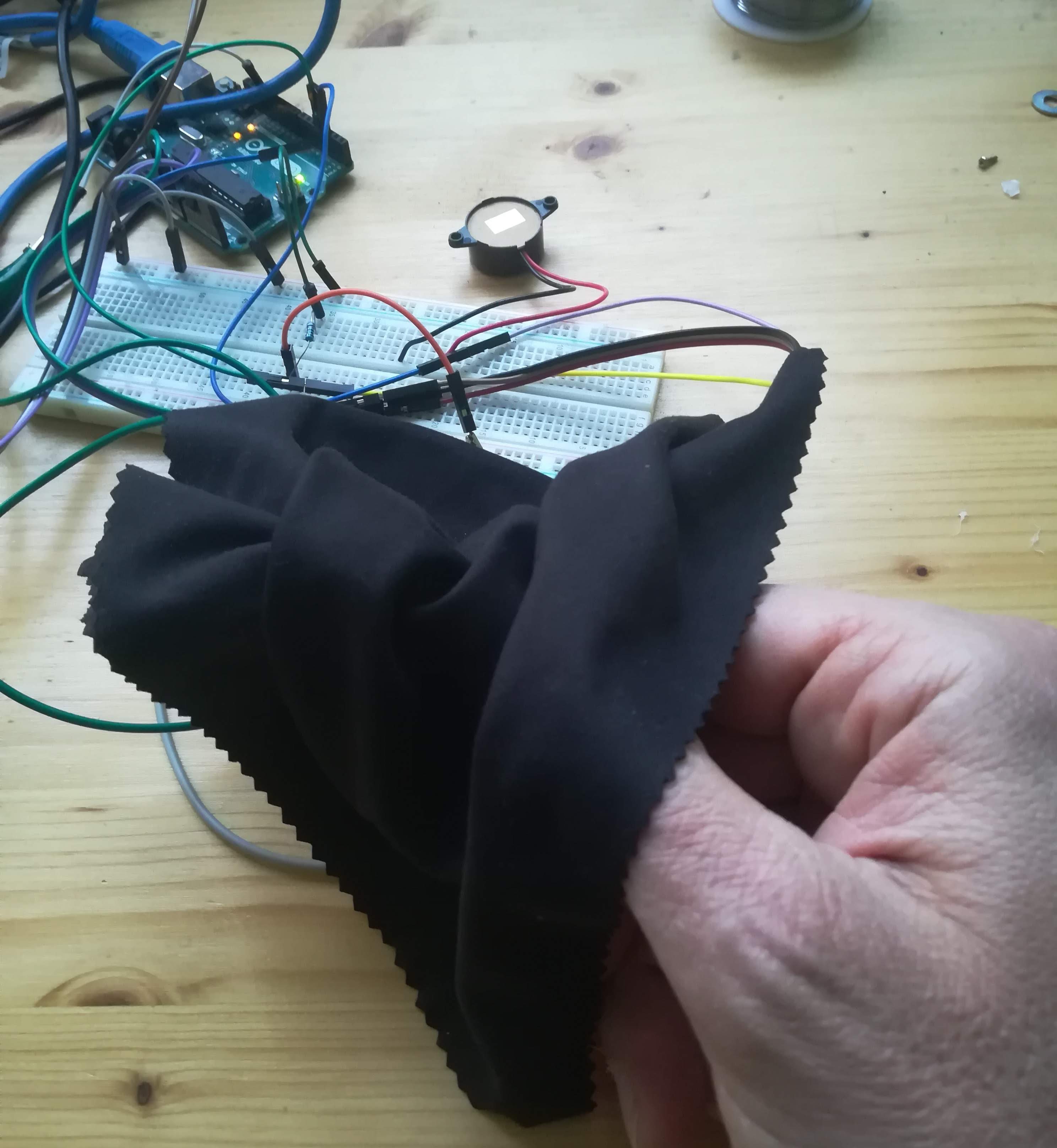I've got a big problem because this oximeter isn't effectively working fine. It works if there is enough ambient light from sun or from an electric lamp, but every time the light changes (just a shadow that passes over) the average value of the signals from the photodiode rise (less light) or fall (more light).
These changing cause problems (or impossibility) to have correct and stable measures of saturation in every situation.
So I've tried to cover the finger, leds and sensor with a black cloth, but the result become also worst. The photodiode signal is really obfuscated with noise that prevents the code to find peaks and then bpm and SpO2.
Since it works better with some additional (ambient) light, I've added a third led, a white led. And decided to take measures with the black cloth covering all the stuff.
The result is better than black cloth without third led and I can read signals again, but now the reads should be independent from ambient light.
What do you think about it? Is this a bad idea?
How can I get better values from the sensor?


 Giulio Pons
Giulio Pons
Discussions
Become a Hackaday.io Member
Create an account to leave a comment. Already have an account? Log In.
Have you tried turning the LEDs on and off at very fast rate (several orders of magnitude higher than heartbeat)? This way, you could measure both the ambient light and combination of ambient light and light from the LEDs. Then you could subtract these two to get rid of the ambient light. However, this depends on the dynamic parameters of the photodiode - the switching and sampling rate has to be low enough for the photodiode to reach steady state. Look up synchronous detection.
Are you sure? yes | no
thank you for your suggestion. I will do some attempts. At this moment the most stable result is with the third led and the black cloth.
Are you sure? yes | no
I don't really have much insight into oximeters but I remember that when I underwent overnight monitoring, the probe was a clip that went around my finger, and the LED was red. Perhaps there was a red filter on the photodiode, in addition to the light shielding of the clip.
Are you sure? yes | no